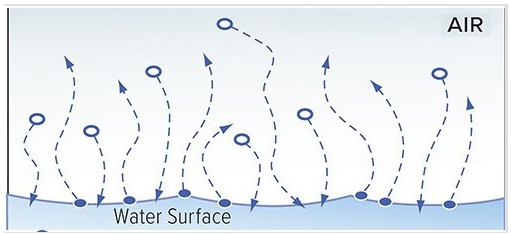Highly vesicular, intermediate-sized pyroclastic fragments of dacite or rhyolite are called
A) cinder.
B) pumice.
C) scoria.
D) lapilli.
Answer: B
You might also like to view...
We feel uncomfortably warm on a muggy day because water molecules are
A. evaporating from our moist bodies. B. preventing the evaporation from our moist bodies. C. condensing on our bodies.
In the diagram, there is

A) higher overall energy levels, with a decrease of water vapor in the air.
B) lower overall energy levels, with an increase of water vapor in the air.
C) an equilibrium between condensation and evaporation.
D) lower overall energy levels, with a decrease of water vapor in the air.
Wind deposits composed of sand-sized particles that are deposited near their source are called
____________________. Fill in the blank(s) with the appropriate word(s).
Which of the following best describes energy collection and conversion in a tree?
A) Leaves collect and chlorophyll converts. B) Leaves convert and chlorophyll collects. C) Roots collect and leaves convert. D) Seeds collect and leaves convert.